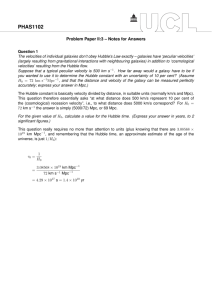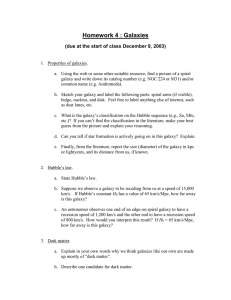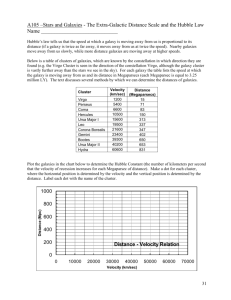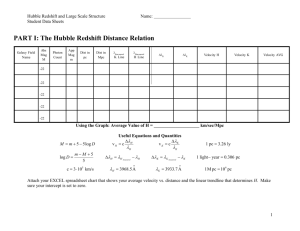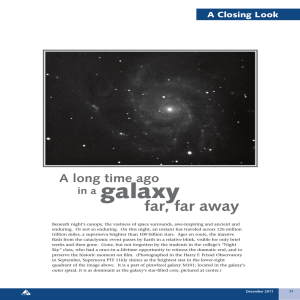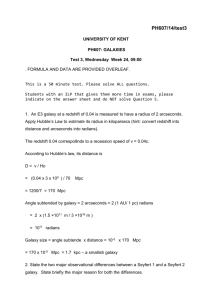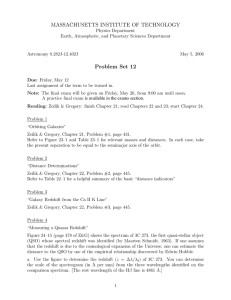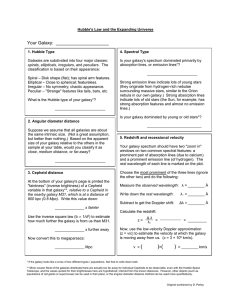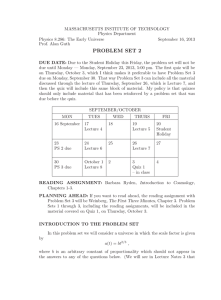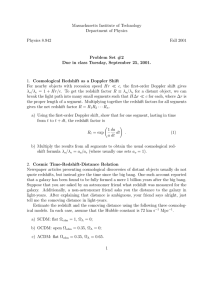PHYSICS 162 Prof: Kim Griest HOMEWORK 1 Due: Monday April 4, 2016
advertisement
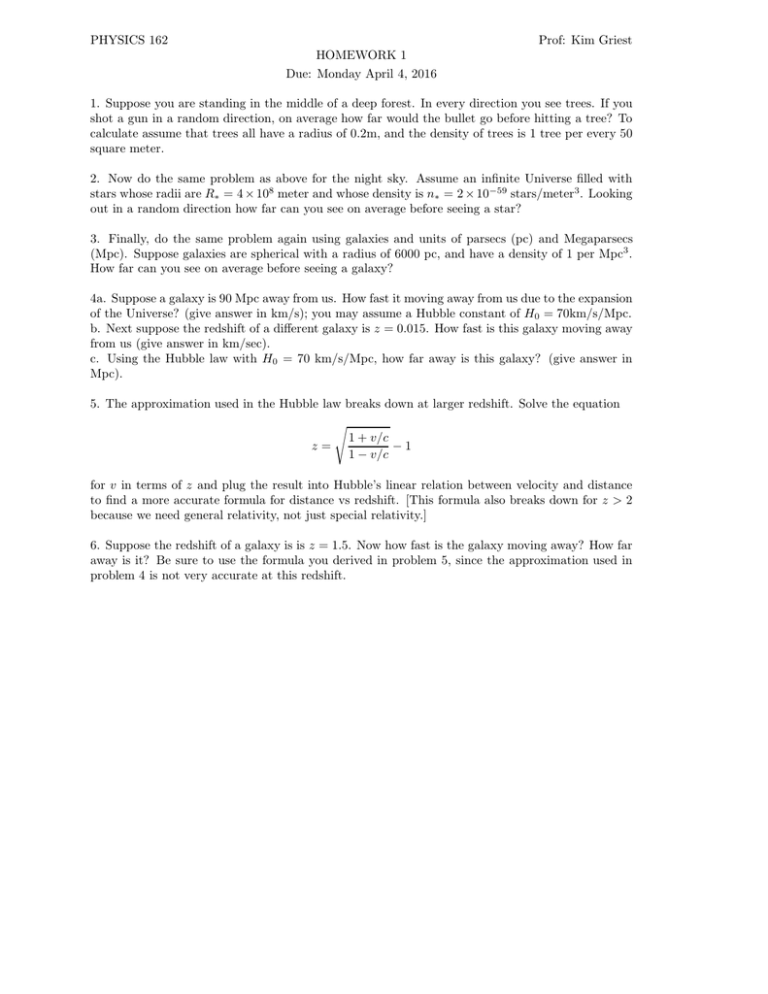
PHYSICS 162 Prof: Kim Griest HOMEWORK 1 Due: Monday April 4, 2016 1. Suppose you are standing in the middle of a deep forest. In every direction you see trees. If you shot a gun in a random direction, on average how far would the bullet go before hitting a tree? To calculate assume that trees all have a radius of 0.2m, and the density of trees is 1 tree per every 50 square meter. 2. Now do the same problem as above for the night sky. Assume an infinite Universe filled with stars whose radii are R∗ = 4 × 108 meter and whose density is n∗ = 2 × 10−59 stars/meter3 . Looking out in a random direction how far can you see on average before seeing a star? 3. Finally, do the same problem again using galaxies and units of parsecs (pc) and Megaparsecs (Mpc). Suppose galaxies are spherical with a radius of 6000 pc, and have a density of 1 per Mpc3 . How far can you see on average before seeing a galaxy? 4a. Suppose a galaxy is 90 Mpc away from us. How fast it moving away from us due to the expansion of the Universe? (give answer in km/s); you may assume a Hubble constant of H0 = 70km/s/Mpc. b. Next suppose the redshift of a different galaxy is z = 0.015. How fast is this galaxy moving away from us (give answer in km/sec). c. Using the Hubble law with H0 = 70 km/s/Mpc, how far away is this galaxy? (give answer in Mpc). 5. The approximation used in the Hubble law breaks down at larger redshift. Solve the equation z= s 1 + v/c −1 1 − v/c for v in terms of z and plug the result into Hubble’s linear relation between velocity and distance to find a more accurate formula for distance vs redshift. [This formula also breaks down for z > 2 because we need general relativity, not just special relativity.] 6. Suppose the redshift of a galaxy is is z = 1.5. Now how fast is the galaxy moving away? How far away is it? Be sure to use the formula you derived in problem 5, since the approximation used in problem 4 is not very accurate at this redshift.
